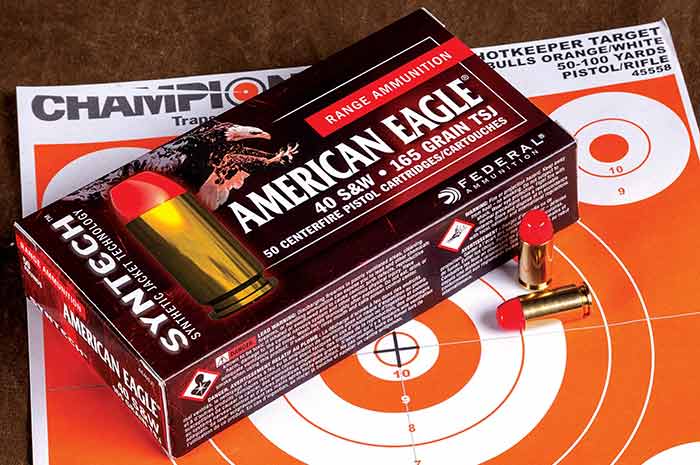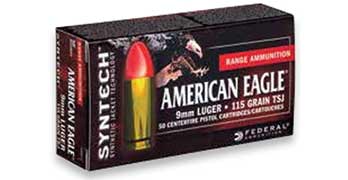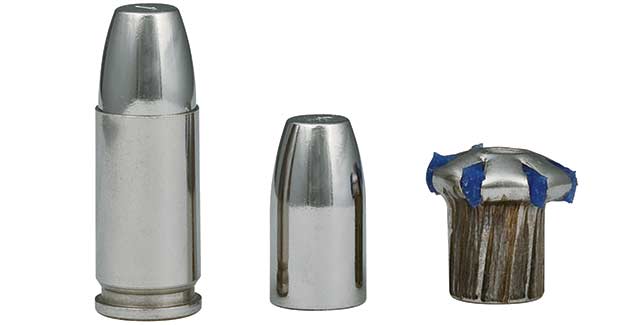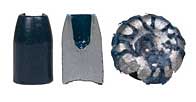Federal Premium will introduce a new line of ammunition under its American Eagle brand at the SHOT Show. Called Syntech, the new ammunition uses a polymer jacket instead of a more traditional copper one.
The new ammo will be offered in three handgun calibers at launch: 9mm, .40 S&W and .45 ACP. Bullet weights will be typical for the caliber: 115 grains for the 9mm, 165 grains for the .40 and 230 grains for the .45.

Using a polymer jacket has a number of potential advantages for the company and the shooter. First, Federal may be able to manufacture these bullets for less money than if the company used a traditional copper jacket. This can work out to be lower prices for the consumer.
Secondly, by using a polymer jacket, there can be less fouling of the bore. Plain lead bullets can leave quite a bit of residue behind that is tough to scrub out. Copper jackets reduce the fouling, but copper is still tough to remove from a bore. Any polymer left behind is likely to be easier to remove from the pistol’s barrel.
Another potential benefit of using a polymer jacket is a reduction in “splash back” when shooting steel. Shooting steel targets is both fun and useful as a training tool. However, one of the risks involved bullet shrapnel bouncing back at the shooter. Even when operating at supposedly safe distances, I’ve seen part of a copper jacket come back and strike a shooter just above the eye. In theory, a polymer jacket will not rebound off of steel in the same way that copper would.
American Eagle Syntech ammunition is not the first time the company has used a polymer jacket. Federal used a polymer jacket on its popular Nyclad line of ammo many moons ago, and still does on the modern Nyclad .38 Special rounds.
For these loads, Federal used a soft lead alloy that would readily expand at even low velocities. However, copper jackets would inhibit expansion, and bare lead would leave a lot of gunk behind in the gun. To solve the problem, a polymer jacket was developed.
While the Nyclad line was eclipsed by other defensive ammunition lines, I am not familiar with any problems with the ammo caused by the polymer jacket.
I do not have any word on pricing yet for these rounds. As I get additional information leading into the SHOT Show, I will update this article.





